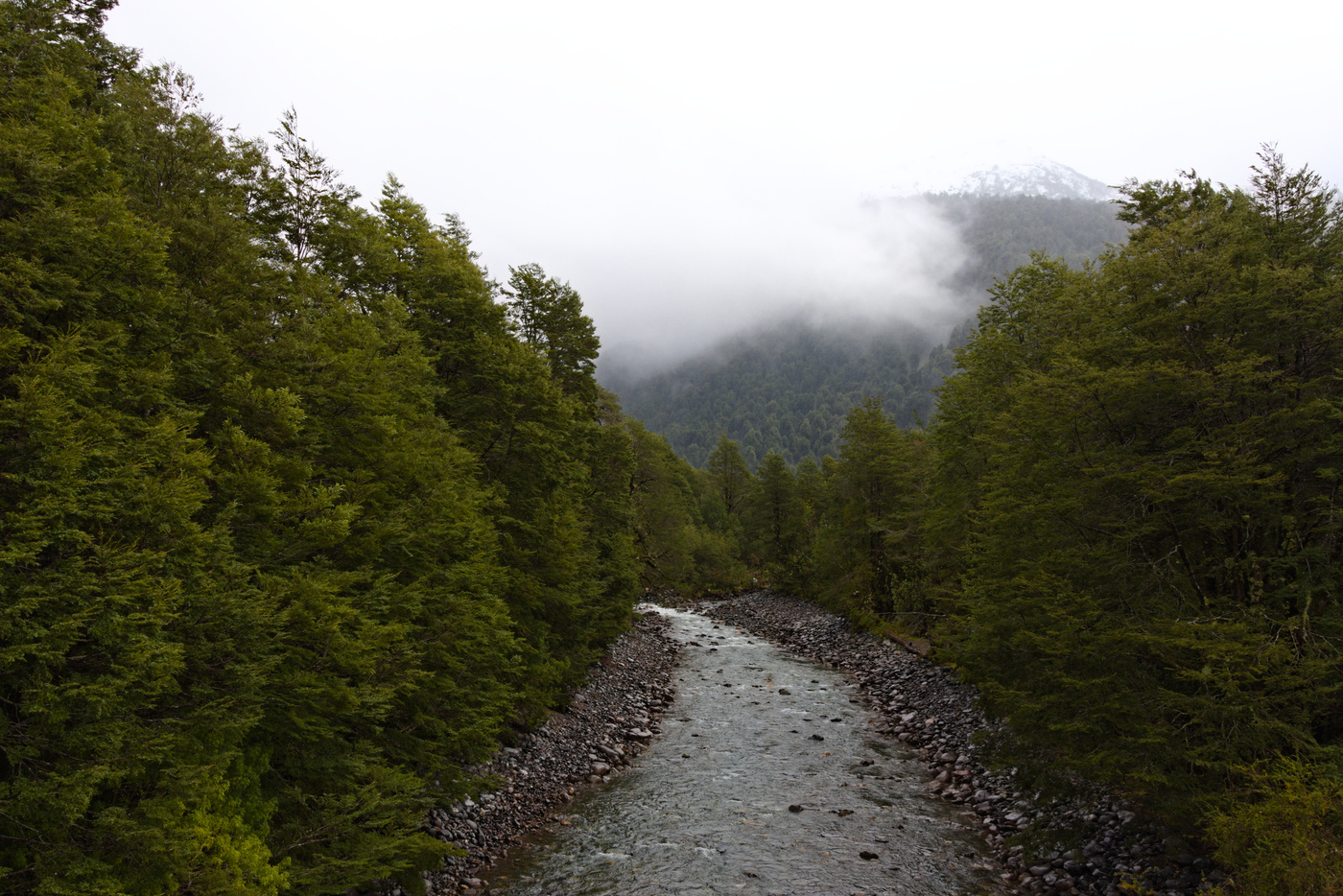Carretera Austral - The valley of rain

The day started once again with rain. Straight out of Chaiten three dogs were following me and barking, but none had enough stamina to keep up with me. After this scare, the road was quite quiet, with not many cars or trucks. So far, they have been well behaved and passed me respecting the 1.5m of distance. Many locals told me to be careful, but drivers were more careful maybe because the proper high season hadn’t started yet. What would turn out to be a common thing along this trip is that drivers on the other direction waved to say hi. Even people on motorcycles (many of them Brazilian tourists) were also saying hi.
The first stop of the day was at the Ranita de Darwin trail in the Amarillo sector of the Pumalin NP. Nobody was here, only some boot marks on the dusty road indicated the presence of someone somewhere. With nobody in sight, I quickly did the trail. The trail itself is a path through the forest sometimes muddy but with wooden planks to cross some of them. Seen a Ranita de Darwin is very difficult as they are very small, however I saw woodpeckers and other birds could be heard.
Rain and cold on the rise
With a bit of rain every now and then, water falling from the mountain sides could frequently be seen from El Amarillo to the south. The first big lake on the road is the Yelcho. So far the road hasn’t been difficult but once you reach the lake it starts to climb. The lake cannot be seen much once you pass the hanging bridge after Puerto Cardenas because of tall trees, the few lookouts are not very good as the electricity cables block the view.

The first big climb is the “cuesta” Moraga. This climb is not difficult, but closer to the peak patches of snow could be seen on the side of the road. The cold and rain, made for a very cold descent into Villa Santa Lucia. This small village was almost erased from the map after a landslide, caused by high temperatures and rain near the Yelcho glacier, buried part of the town on 2016. The consequences can still be seen as a section of the road is still being repaired and in the museum dedicated to the tragedy.
As a small town, there were 2 hostels, a camping and some cabanas. Although the camping was covered, a few pools of water were under the roofs. Of the 2 hostels, the owners of my preferred ones were out and hadn’t come back. So I went to the other one, because the cold was setting in (but was still relatively early). The hostel wasn’t well kept, understandably because the owner may have only time for the store in the first floor. After showering and having a soup, I went to my room to rest. Here I noticed that the room was not the best, with a hole in the wall (which I covered with tape) and holes in the roof were some bird poop has accumulating.
So I decided to give the other place a go. Fortunately, the owners were back, so I moved there. This one was more comfortable, and I spent a good time talking to the owners, who shared stories about other travelers and how was living through the pandemic here. They also gave some recommendations about good camping sites to stay further south.

The next morning was raining more heavily and colder, but the road was very flat and it took me little time to arrive at La Junta.
Days at La junta
La Junta is a bit smaller than Chaiten, but the dogs were tamer. At the time of my arrival it was getting sunny with scattered clouds and windy. After a well deserved lunch I found accommodation. There was no point on rushing since the next national park I wanted to visit would be closed for a few days before I could get there. So I stayed in a good place for 2 nights.

After putting my clothes and cycling shoes to dry and taking a good shower, I walked to a lookout in the hill next to town for a panoramic view of the town. With passing clouds beams of light illuminated the green fields in the farms around town and the snowed mountains at the distance. I spent probably a good 30 minutes there enjoying the view and taking pictures. Food in town was not easy to find with only a couple of restaurants and stores open. Nevertheless, I enjoyed the local salmon, puyes (small fish which are locally produced and sold at high prices to international hotels) and nalca (giant rhubarb) as dessert.
The good weather didn’t last. The day after I was thinking of going to the Rosselot lake and visit the confluence of the Palena and Rosselot rivers, but the rain started early and didn’t stop until the end of the day. Even going out to get food without getting wet was difficult. So I just rested that day and sorted my things.
Maps:
More pictures:
Enjoy Reading This Article?
Here are some more articles you might like to read next:
